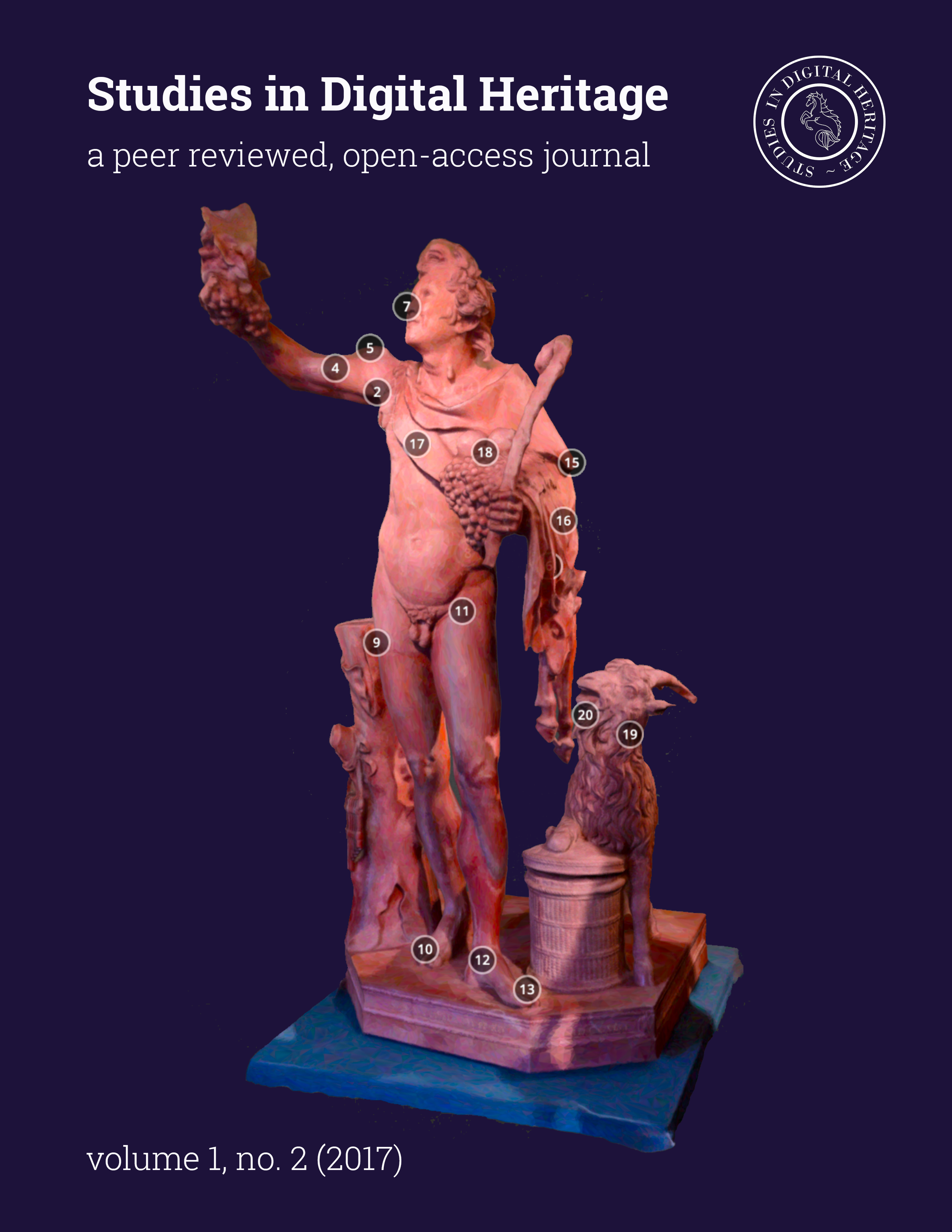How Much of a Historic Town Can Be Mapped by a Terrestrial Laser Scanner within a Working Day? - A Single Touch Workflow
Main Article Content
Abstract
Downtown Vienna with its world-famous cultural sites and architectural features is most definitely worth conservation. One way to archive at least a digital 3D imprint is laser scanning. While urban mapping with airborne or mobile laser scanning is fast and efficient, the resulting point clouds might not have the required resolution or might experience gaps due to shadowing. Terrestrial laser scanning has the potential to overcome these limitations. However, it has long been considered time-consuming and labour-intensive both while capturing and also while processing the data.
In order to challenge this, we performed a field test with the new RIEGL VZ-400i terrestrial laser scanner. For eight hours, in the night from 2nd to 3rd of June 2016, one single operator employed the instrument throughout the city center of Vienna. He managed to take 514 high-resolution laser scans with approximately 9m between the scan positions.
The data acquired in the course of this test impressively demonstrates the potential of state-of-the-art terrestrial laser scanning to preserve detailed 3D-information of urban environments within limited amount of time. This paper describes the complete workflow from the one touch operation in the field up to the automatic registration process of the collected laser scans.
Downloads
Article Details
From 18 May 2018, the contents of Studies in Digital Heritage are licensed under a Creative Commons Attribution-NonCommercial 4.0 International License (CC BY-NC 4.0). Our submitting authors pay no fee and retain the copyright to their own work.
How this works: to submit their work to the journal, authors grant Studies in Digital Heritage a nonexclusive license to distribute the work according to a CC BY-NC 4.0 license. Once an article is published, anyone is free to share and adapt its contents—provided only that they do so for noncommercial purposes and properly attribute the shared or adapted information. Details of these terms can be found on the Creative Commons website.
Download SDH’s full author agreement here
Studies in Digital Heritage will insert the following note at the end of any work published in the journal:
© [Year] by the authors. This article is an open-access article distributed under the terms and conditions of the Creative Commons Attribution License CC BY-NC 4.0 (https://creativecommons.org/licenses/by-nc/4.0/).
References
Christoph Dold and Claus Brenner. 2006. Registration of terrestrial laser scanning data using planar patches and image data. ISPRS Commission V Symposium “Image Engineering and Vision Metrology”. IAPRS Volume XXXVI, Part 5, Dresden September 2006.
Karolina Hejbudzka and Andrzej Dumalski. 2013. Digital heritage documentation using terrestrial laser scanning technology. In R. Źróbek & D. Kereković, eds. GIS and its Implementation. Zagreb: Croatian Information Technology Society – GIS Forum, , 46-56.
Maria Kołakowska and Ewa Świerczyńska. Selected aspects of using terrestrial laser scanning technology as the source of additional data for building information modeling. Department of Geodesy and Cartography 2014. Vol. 4,4 (2013). http://journal.young-scientists.eu Warsaw University of Technology. Warsaw.
Andreas Ullrich et al. 2003. 3D-Laser-Sensors and their Applications in Archaeology and Modeling of Historic Buildings. Vienna. http://whc.unesco.org/en/danger/


